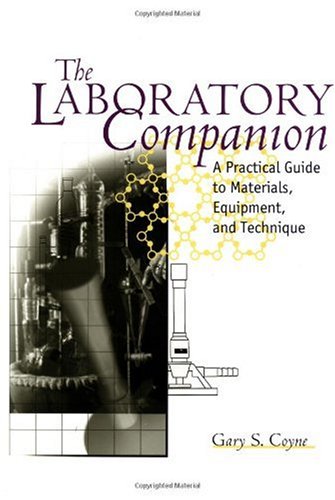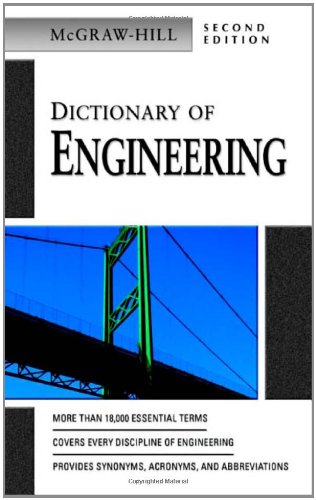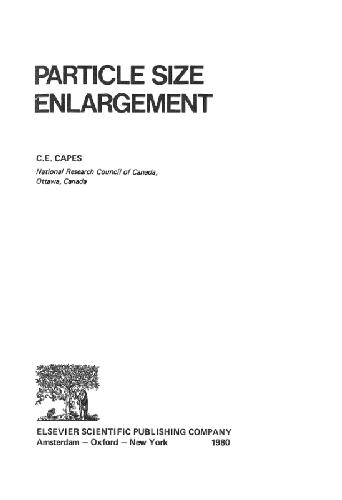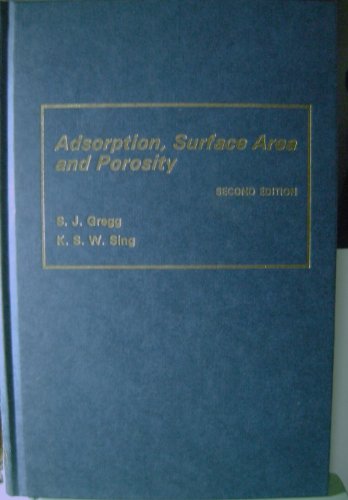Jo Labanyi, University of London0718710835, 9780718710835
Table of contents :
Contents……Page 4
Preface……Page 13
Acknowledgements……Page 16
Part 1. Atomic structure. Arrangement, and Movement……Page 17
1.2 Types of Materials……Page 19
1.3 Structure-Property-Processing Relationship……Page 24
1.4 Environmental Effects on Material Behaviour……Page 28
1.5 Materials Design ant! Selection……Page 30
Summary……Page 31
Glossary……Page 32
Problems……Page 33
2.2 The Structure of the Atom……Page 35
2.3 The Electronic Structure of the Atom……Page 36
2.4 Atomic Bonding……Page 40
2.5 Binding Energy and Interatomic Spacing……Page 47
Glossary……Page 50
Problems……Page 52
Design Problems……Page 53
3.2 Short-Range Order Versus Long-Range Order……Page 55
3.3 Unit Cells……Page 57
3.5 Points, Directions, and Planes in the Unit Cell……Page 63
3.6 Interstitial Sites……Page 71
3.7 Ionic Crystals……Page 74
3.8 Covalent Structures……Page 77
3.9 X-Ray Diffraction……Page 80
Summary……Page 83
Glossary……Page 84
Problems……Page 86
Design Problems……Page 92
4.2 Dislocations……Page 93
4.3 Significance of Dislocations……Page 100
4.4 Schmid’s Law……Page 101
4.5 Influence of Crystal Structure……Page 103
4.6 Point Defects……Page 104
4.7 Surface Defects……Page 110
4.8 Control of the Slip Process……Page 115
Summary……Page 117
Glossary……Page 118
Problems……Page 120
5.2 Stability of Atoms……Page 124
5.3 Diffusion Mechanisms……Page 126
5.5 Rate of Diffusion (Fick’s First Law)……Page 128
5.6 Composition Profile (Fick’s Second Law)……Page 139
5.7 Diffusion and Materials Processing……Page 143
Summary……Page 145
Glossary……Page 146
Problems……Page 147
Design Problems……Page 149
6.2 The Tensile Test: Use of the Stress-Strain Diagram……Page 151
6.3 Properties Obtained from the Tensile Test……Page 157
6.4 The Bend Test for Brittle Materials……Page 162
6.5 True Stress-True Strain……Page 165
6.6 The Hardness Test: Its Nature and Use……Page 167
6.7 The Impact Test……Page 172
6.8 Properties Obtained from the Impact Test……Page 173
6.9 Fracture Toughness……Page 176
6.10 The Importance of Fracture Mechanics……Page 178
6.11 The Fatigue Test……Page 179
6.12 Results of the Fatigue Test……Page 181
6.13 Application of Fatigue Testing……Page 182
6.14 The Creep Test……Page 186
6.15 Use of Creep Data……Page 188
Summary……Page 190
Glossary……Page 191
Problems……Page 194
Design Problems……Page 199
7.2 Relationship of Cold Working to the Stress-Strain Curve……Page 201
7.3 Strain-Hardening Mechanisms……Page 203
7.4 Properties versus Percent Cold Work……Page 204
7.5 Microstructure and Residual Stresses……Page 208
7.6 Characteristics ol Cold Working……Page 212
7.7 The Three Stages of Annealing……Page 215
7.S Control of Annealing……Page 217
7.9 Annealing and Materials Processing……Page 218
7.10 Hot Working……Page 220
Summary……Page 222
Glossary……Page 223
Problems……Page 225
8.2 Nucleation……Page 229
8.3 Growth……Page 233
8.4 Solidification Time and Dendrite Size……Page 234
8.5 Cooling Curves……Page 239
8.6 Casting or Ingot Structure……Page 240
8.7 Solidification of Polymers……Page 242
8.8 Solidification Defects……Page 243
8.9 Casting Processes……Page 248
8.10 Solidification and Metals Joining……Page 251
Summary……Page 252
Glossary……Page 253
Problems……Page 256
9.2 Phases and the Unary Phase Diagram……Page 262
9.3 Solubility and Solutions……Page 265
9.4 Conditions for Unlimited Solid Solubility……Page 267
9.5 Solid Solution Strengthening……Page 269
9.6 Isomorphous Phase Diagrams……Page 271
9.7 Relationship Between Properties and the Phase Diagram……Page 279
9.8 Solidification of s Solid Solution Alloy……Page 280
9.9 Nonequilibrium Solidification and Segregation……Page 282
Summary……Page 286
Glossary……Page 287
Problems……Page 288
Design Problems……Page 293
10.2 Principles of Dispersion Strengthening……Page 294
10.3 Intermetallic Compounds……Page 295
10.4 Phase Diagrams Containing Three-Phase Reactions……Page 299
10.5 The Eutectic Phase Diagram……Page 301
10.6 Strength of Alloys Containing the Eutectic Phase……Page 309
10.7 Eutectics and Materials Processing……Page 316
10.9 Ternary Phase Diagrams……Page 318
Summary……Page 321
Glossary……Page 322
Problems……Page 324
Design Problems……Page 328
11.2 Nucleation and Growth in Solid-State Reactions……Page 329
11.3 Alloys Strengthened by Exceeding the Solution Limit……Page 333
11.4 Age Hardening or Precipitation Hardening……Page 335
11.5 Effects of Ageing Temperature and Time……Page 338
11.6 Requirements for Age Hardening……Page 339
11.7 Use of Age Hardenable Alloys at High Temperatures……Page 340
11.8 The Eutectoid Reaction……Page 341
11.9 Controlling the Eutectoid Reaction……Page 345
11.10 The Martensitic Reaction and Tempering……Page 351
Summary……Page 356
Glossary……Page 357
Problems……Page 359
12.2 Designations for Steels……Page 363
12.3 Simple Heat Treatments……Page 365
12.4 Isothermal Heat Treatments……Page 368
12.5 Quench and Temper Heat Treatments……Page 371
12.6 Effect of Alloying Elements……Page 376
12.7 Application of Hardenability……Page 379
12.8 Special Steels……Page 382
32.9 Surface Treatments……Page 383
12.10 Weldability of Steel……Page 386
12.11 Stainless Steels……Page 387
12.12 Phase Transformations in Cast Irons……Page 390
12.13 Characteristics and Production of the Cast Irons……Page 393
Summary……Page 400
Glossary……Page 401
Problems……Page 405
Design Problems……Page 409
13.2 Aluminium Alloys……Page 410
13.3 Magnesium Alloys……Page 421
13.4 Beryllium……Page 423
13.5 Copper Alloys……Page 424
13.6 Nickel and Cobalt……Page 429
13.7 Titanium Alloys……Page 433
13.8 Refractory Metals……Page 440
Summary……Page 441
Glossary……Page 442
Problems……Page 443
Design problems……Page 445
14.1 Introduction……Page 446
14.2 The Structure of Crystalline Ceramics……Page 447
14.3 The Structure of Crystalline Silicates……Page 449
14.4 Imperfections in Crystalline Ceramic Structures……Page 452
14.5 The Structure of Ceramic Glasses……Page 459
14.6 Mechanical Failure of Ceramics……Page 462
14.7 Deformation of Ceramics at High Temperatures……Page 470
14.8 Processing and Applications of Ceramic Glasses……Page 475
14.9 Processing and Applications of Glass-Ceramics……Page 479
14.10 Processing and Applications of Clay Products……Page 480
14.11 Processing and Applications of Advanced Ceramics……Page 483
14.12 Refractories……Page 487
14.13 Other Ceramic Materials and Applications……Page 489
Summary……Page 490
Glossary……Page 491
Problems……Page 493
Design problems……Page 496
15.2 Classification of Polymers……Page 497
15.3 Chain Formation by she Addition Mechanism……Page 500
15.4 Chain Formation by the Condensation Mechanism……Page 506
15.5 Degree of Polymerisation……Page 508
15.6 Arrangement of Polymer Chains in Thermoplastics……Page 510
15.7 Deformation and Failure of Thermoplastic Polymers……Page 516
15.8 Controlling the Structure and Properties of Thermoplastics……Page 525
15.9 Elastomers (Rubbers)……Page 526
15.10 Thermosetting Polymers……Page 540
15.11 Adhesives……Page 544
15.12 Polymer Additives……Page 545
15.13 Forming of Polymers……Page 546
Summary……Page 549
Glossary……Page 550
Problems……Page 552
Design problems……Page 556
16.2 Dispersion-Strengthened Composites……Page 558
16.3 True Particulate Composites……Page 561
16.4 Fibre-Reinforced Composites……Page 567
16.5 Characteristics of Fibre-Reinforced Composites……Page 572
16.6 Manufacturing Fibres and Composites……Page 579
16.7 Fibre-Reinforced Systems and Applications……Page 585
16.8 Laminar Composite Materials……Page 592
16.9 Examples and Applications of Laminar Composites……Page 595
16.10 Sandwich Structures……Page 597
Summary……Page 598
Glossary……Page 599
Problems……Page 601
17.2 The Structure of Wood……Page 604
17.3 Moisture Content and Density of Wood……Page 606
17.4 Mechanical Properties of Wood……Page 609
17.5 Expansion and Contraction of Wood……Page 611
17.7 Concrete Materials……Page 612
17.8 Properties of Concrete……Page 615
17.9 Reinforced and Prestressed Concrete……Page 619
Summary……Page 620
Glossary……Page 621
Design Problems……Page 622
Part 4. Physical Properties of Engineering Materials……Page 624
18.2 Ohm’s Law and Electrical Conductivity……Page 626
18.3 Band Theory……Page 631
18.4 Controlling the Conductivity of Metals……Page 634
18.5 Superconductivity……Page 638
18.6 Conductivity in Other Materials……Page 642
18.7 Intrinsic Semiconductors……Page 644
18.8 Extrinsic Semiconductors……Page 646
18.9 Applications of Semiconductors to Electrical Devices……Page 649
18.10 Manufacture and Fabrication of Semiconductor Devices……Page 653
18.11 Insulators and Dielectric Properties……Page 654
18.12 Dipoles and Polarisation……Page 655
18.13 Dielectric Properties and Their Control……Page 658
18.14 Dielectric Properties and Capacitors……Page 662
18.15 Dielectric Properties and Electrical Insulators……Page 664
18.16 Piezoelectricity and Electrostriction……Page 665
18.17 Ferroelectricity……Page 667
Summary……Page 668
Glossary……Page 669
Problems……Page 672
Design Problems……Page 675
19.2 Magnetic Dipoles and Magnetic Moments……Page 676
19.3 Magnetisation, Permeability, and the Magnetic Field……Page 678
19.4 Interactions Between Magnetic Dipoles and the Magnetic Field……Page 680
19.5 Domain Structure and the Hysteresis Loop……Page 683
19.6 Application of the Magnetisation-Field Curve……Page 685
19.7 The Curie Temperature……Page 689
19.8 Magnetic Materials……Page 690
Summary……Page 696
Glossary……Page 697
Problems……Page 698
Design Problems……Page 700
20.2 The Electromagnetic Spectrum……Page 701
20.3 Examples and Use of Emission Phenomena……Page 702
20.4 Interaction of Photons with a Material……Page 712
20.5 Photonic Systems and Materials……Page 725
Summary……Page 727
Glossary……Page 728
Problems……Page 729
Design Problems……Page 731
21.2 Heat Capacity and Specific Heat……Page 732
21.3 Thermal Expansion……Page 734
21.4 Thermal Conductivity……Page 736
21.5 Thermal Shock……Page 740
Summary……Page 741
Glossary……Page 742
Problems……Page 743
Design Problems……Page 744
Part 5. Protection Against Deterioration and Failure of Materials……Page 746
22.2 Chemical Corrosion……Page 748
22.3 Electrochemical Corrosion……Page 750
22.4 The Electrode Potential in Electrochemical Cells……Page 753
22.6 Types of Electrochemical Corrosion……Page 758
22.7 Protection Against Electrochemical Corrosion……Page 764
22.8 Microbiological Degradation and Biodegradable Polymers……Page 770
22.9 Oxidation and Other Gas Reactions……Page 771
22.10 Wear and Erosion……Page 775
Summary……Page 777
Glossary……Page 778
Problems……Page 781
Design .Problems……Page 783
23.2 Determining the Fracture Mechanism in Metal Failures……Page 784
23.3 Fracture in Nonmetallic Materials……Page 794
23.4 Source and Prevention of Failures in Metals……Page 795
23.5 Nondestructive Testing Methods……Page 800
Summary……Page 814
Glossary……Page 815
Problems……Page 816
Design Problems……Page 819
Answers to selected problems……Page 820
Appendix A: Selected Physical Properties of Elements……Page 830
Appendix B: The Atomic and Ionic Radii of Selected Elements……Page 832
Appendix C: The Electronic Configuration of Each of the Elements……Page 834
Index……Page 836
Periodic Table of the Elements……Page 854







Reviews
There are no reviews yet.